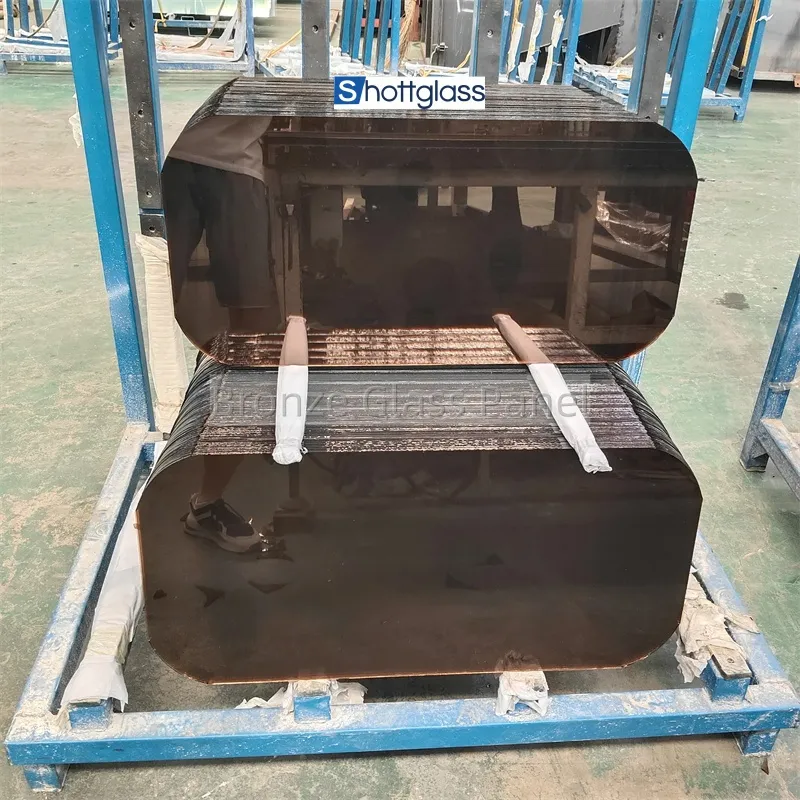Nov . 05, 2024 22:41 Back to list
Exploring the Benefits and Applications of Flat Float Glass in Modern Architecture
The Versatility and Importance of Flat Float Glass
Flat float glass is one of the most prevalent materials used in construction, automotive, and decorative industries today. Its pristine clarity, smooth surface, and versatility make it an indispensable component in modern architecture and design.
The manufacturing process of float glass involves a fascinating technique that was developed in the 1950s. The name “float glass” comes from the method in which molten glass is floated on top of molten tin. This unique process allows for the creation of incredibly flat, high-quality glass sheets with uniform thickness, which are crucial for various applications. The float method not only provides for excellent optical quality but also minimizes surface defects. The result is a product that is both aesthetically pleasing and functionally efficient, ultimately becoming a preferred choice for manufacturers and designers alike.
One of the most significant advantages of flat float glass is its clarity. With minimal distortion, flat glass allows for maximum light transmission, making it ideal for windows, glass doors, and facades. It creates a seamless connection between indoor and outdoor spaces, enhancing natural light while providing unobstructed views that are valued in contemporary architectural design. Moreover, its properties can be further enhanced through various treatments such as tempering, lamination, and coating, ensuring safety and energy efficiency.
In the construction industry, flat float glass plays a vital role in energy-efficient buildings. Innovations have expanded its functionality beyond simple transparency. For instance, low-emissivity (Low-E) glass is designed to reflect infrared light while allowing visible light to pass through. This characteristic significantly reduces heat loss during the winter and minimizes heat gain during the summer, thus lowering energy consumption for heating and cooling. As sustainability becomes increasingly important in building design, the role of energy-efficient flat float glass cannot be overstated.
flat float glass

Another notable application of flat float glass is in the automotive industry. Cars today utilize extensive glass surfaces, and the clarity, strength, and UV protection of float glass make it an ideal choice for windshields and windows. Specialized forms of flat float glass, like tempered glass, enhance safety by being less prone to shattering, contributing to overall vehicle safety. Additionally, advancements in glass technology, such as the integration of smart glass, allow for dynamic control of light and privacy in vehicles.
Beyond functional applications, flat float glass is also celebrated for its aesthetic qualities in interior design. Glass partitions, sliding doors, and decorative glass elements add elegance and a sense of space to residential and commercial environments. Designers have leveraged the versatility of flat glass to create striking visual displays, combining it with materials like wood and metal to achieve contemporary looks. It allows spaces to feel brighter, larger, and more inviting, emphasizing minimalism and modernity.
Moreover, flat floater glass has a significant role in art and decorative applications. Artists and craftsmen utilize its clarity and reflective properties to create stunning glass art pieces, intricate stained glass windows, and custom installations that promote creativity and innovation. The adaptability of flat glass means it can be shaped, colored, and layered in ways that challenge conventional boundaries.
In conclusion, flat float glass is a remarkable material that has secured its position as a fundamental component of modern design and architecture. Its seamless blend of form and function addresses the needs of industries ranging from construction to automotive and design. As technology continues to advance, the possibilities for flat float glass are boundless, ensuring that it will remain a critical player in the evolution of sustainable architecture and innovative design solutions. Its enduring appeal lies in its versatility, making it an essential material for future generations to come.
-
Safety and Style with Premium Laminated Glass Solutions
NewsJun.24,2025
-
Reinvents Security with Premium Wired Glass
NewsJun.24,2025
-
Premium Float Glass Line for Modern Architecture
NewsJun.24,2025
-
Low Emissivity Glass for Energy-Efficient Architecture
NewsJun.24,2025
-
High-Performance Insulated Glass Solutions for Modern Architecture
NewsJun.24,2025
-
Elevates Interior Style with Premium Silver Mirror
NewsJun.24,2025
Related PRODUCTS














